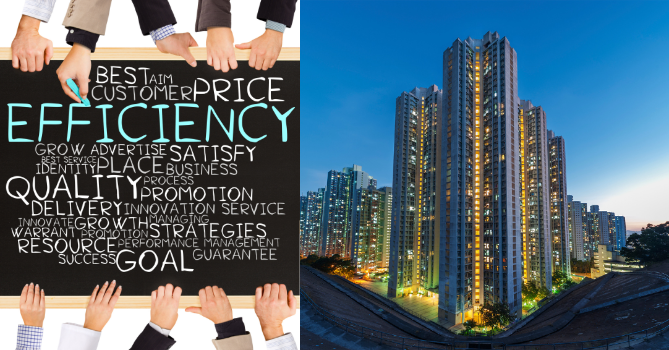
The Synergy of Architects and Builders in Construction
Hey there! Ever wondered how those stunning buildings and homes you see around you come to life? Well, it's all about teamwork between architects and builders.
In this blog, we're diving into the fascinating world of construction to explore how architects and builders work together to turn dreams into reality. From designing sleek skyscrapers to crafting cozy cottages, this collaboration is the secret sauce behind every successful construction project.
But before we get into the nitty-gritty, let's take a moment to appreciate the magic of collaboration. It's not just about drawing up plans or swinging hammers – it's about sharing ideas, solving problems, and bringing visions to life.
So, grab your hard hat and join us on this journey as we uncover the true power of collaboration in construction. Whether you're a seasoned pro or just curious about how buildings come to be, there's something here for everyone. Ready to dive in? Let's get started!
Architects and builders are like the dynamic duo of the construction world. Each plays a crucial role in bringing a project from concept to completion.
First up, we have architects. These creative minds are the masterminds behind the design of a building. They're the ones who sketch out the blueprints, envisioning every detail from the layout to the aesthetics. Architects work closely with clients to understand their needs and preferences, translating them into beautiful, functional spaces.
On the other hand, builders are the ones who roll up their sleeves and bring those designs to life. They're the ones who take the plans and turn them into reality, using their expertise and skills to construct the building from the ground up. Builders coordinate with subcontractors and suppliers, ensuring that everything is done according to plan and within budget.
But it's not just about drawing up plans or swinging hammers – architects and builders collaborate throughout the entire construction process. Architects provide guidance and oversight, ensuring that the design vision is realized, while builders offer insights and practical solutions, making adjustments as needed to overcome challenges and ensure quality.
Together, architects and builders form a powerful team, each bringing their unique expertise to the table. It's this collaboration that sets the stage for successful construction projects, where creativity meets craftsmanship to create something truly extraordinary. So, whether you're dreaming of a sleek modern office building or a cozy family home, you can thank the partnership of architects and builders for making it happen.
Collaboration between architects and builders isn't just a nice-to-have – it's essential for the success of any construction project. Let's explore some of the key benefits of this teamwork.
First and foremost, collaboration leads to better design outcomes. By working together from the outset, architects and builders can leverage each other's expertise to create designs that are not only aesthetically pleasing but also practical and cost-effective. Builders can provide valuable input on construction methods and materials, helping architects refine their designs to ensure they're both visually stunning and structurally sound.
Another benefit of collaboration is improved efficiency. When architects and builders communicate openly and work together seamlessly, it streamlines the entire construction process. Decisions can be made more quickly, potential issues can be addressed before they become problems, and timelines can be adhered to more closely. This results in projects that are completed on time and within budget, saving both time and money for all involved.

Collaboration also fosters innovation. When architects and builders come together, they bring different perspectives and ideas to the table. This can lead to creative solutions to complex problems and innovative approaches to design and construction. By pushing each other to think outside the box, architects and builders can create buildings that are truly groundbreaking and push the boundaries of what's possible in construction.
Furthermore, collaboration enhances project communication and teamwork. When architects and builders work together closely, it fosters a spirit of cooperation and mutual respect. This leads to better communication, fewer misunderstandings, and a stronger sense of teamwork among all project stakeholders. Everyone feels invested in the project's success and works together towards a common goal.
In summary, collaboration between architects and builders brings a host of benefits to construction projects, including better design outcomes, improved efficiency, enhanced innovation, and stronger teamwork. By embracing collaboration, construction teams can create buildings that not only meet but exceed client expectations, leaving a lasting legacy for years to come.
Despite the many benefits of collaboration, architects and builders can encounter challenges along the way. Let's explore some common hurdles and practical solutions for overcoming them.
One challenge is miscommunication. Architects and builders may have different perspectives and priorities, leading to misunderstandings or conflicts. To address this, clear communication channels should be established from the outset. Regular meetings and check-ins allow both parties to share updates, ask questions, and address concerns openly.
Another challenge is differing priorities. Architects may prioritize design aesthetics, while builders focus on practicality and cost-effectiveness. To bridge this gap, architects and builders should collaborate closely during the design phase, seeking input from each other to ensure that designs are both visually appealing and feasible within budget constraints.
Additionally, project delays can arise due to unforeseen circumstances or changes in scope. To mitigate this risk, architects and builders should create contingency plans and build flexibility into project timelines. Regular project monitoring and proactive problem-solving can help prevent delays and keep the project on track.
Furthermore, budget constraints can pose a challenge to collaboration. Architects may design elaborate structures that exceed the client's budget, while builders must find cost-effective ways to bring these designs to life. To address this, architects and builders should work together to find creative solutions that meet both aesthetic and budgetary requirements.

In summary, collaboration between architects and builders is essential for successful construction projects, but it's not without its challenges. By fostering clear communication, aligning priorities, planning for contingencies, and finding creative solutions to budget constraints, architects and builders can overcome these challenges and create buildings that exceed client expectations.
The collaboration between architects and builders not only influences the aesthetic and functional aspects of construction projects but also has a significant economic impact. Let's delve into how this partnership affects the bottom line.
First and foremost, effective collaboration leads to cost savings. By involving builders in the design process from the beginning, architects can create designs that are not only visually appealing but also practical and cost-effective to construct. Builders can provide valuable input on construction methods, materials, and labor requirements, helping architects make informed decisions that optimize project costs without compromising quality.
Moreover, collaboration enhances project efficiency, resulting in shorter construction timelines and reduced labor costs. When architects and builders work together seamlessly, decisions can be made more quickly, potential issues can be addressed promptly, and construction activities can proceed smoothly. This reduces downtime and minimizes delays, resulting in overall cost savings for the project.
Additionally, collaboration can attract investment and drive economic growth in the construction industry. When architects and builders produce high-quality, innovative projects together, it enhances the reputation of both the individual professionals and the firms they represent. This, in turn, attracts more clients and investors, leading to a steady flow of projects and opportunities for growth and expansion.
Furthermore, collaboration fosters sustainability in construction, which can have long-term economic benefits. By integrating sustainable design principles and construction practices into projects, architects and builders can reduce energy consumption, minimize waste, and lower operating costs for building owners over time. This not only benefits the environment but also contributes to the economic viability and longevity of the built environment.
In summary, collaboration between architects and builders has a profound economic impact on construction projects. From cost savings and efficiency gains to attracting investment and promoting sustainability, the benefits of this partnership extend far beyond the construction site, shaping the economic landscape of the industry for years to come.
As the construction industry continues to evolve, so too does the collaboration between architects and builders. Let's explore some of the future trends and innovations shaping this partnership.
One trend on the horizon is the increased adoption of Building Information Modeling (BIM). BIM technology allows architects and builders to create digital representations of buildings, which can be used for design visualization, clash detection, and construction planning. As BIM becomes more sophisticated and accessible, it will revolutionize the way architects and builders collaborate, enabling real-time collaboration and coordination throughout the entire construction process.
Another emerging trend is the integration of virtual reality (VR) and augmented reality (AR) into the design and construction workflow. VR and AR technologies allow architects and builders to visualize and experience building designs in immersive 3D environments. This not only enhances communication and collaboration between project stakeholders but also facilitates more informed decision-making and problem-solving.
Furthermore, sustainable design and construction practices are expected to become increasingly prevalent in the future. Architects and builders will need to collaborate closely to incorporate sustainable design principles and construction methods into their projects, from energy-efficient building systems to eco-friendly materials. This emphasis on sustainability not only addresses environmental concerns but also responds to growing consumer demand for green buildings and environmentally responsible construction practices.
Additionally, advancements in prefabrication and modular construction techniques are poised to revolutionize the way buildings are designed and constructed. By collaborating on modular design solutions, architects and builders can streamline construction processes, reduce waste, and shorten project timelines, ultimately delivering high-quality buildings more efficiently and cost-effectively.
In summary, the future of collaboration between architects and builders is bright, with exciting trends and innovations on the horizon. By embracing technologies like BIM, VR, and AR, and prioritizing sustainability and modular construction, architects and builders can stay ahead of the curve and continue to deliver exceptional projects that meet the evolving needs of clients and communities.
In conclusion, the collaboration between architects and builders is the cornerstone of successful construction projects, influencing not only the aesthetic and functional aspects but also the economic and environmental impact of the built environment. By working together seamlessly, architects and builders can create buildings that not only meet but exceed client expectations, while also driving innovation, efficiency, and sustainability in the construction industry.
As we look to the future, the possibilities for collaboration are endless, with emerging technologies and innovative practices reshaping the way architects and builders work together. By embracing these trends and continuing to prioritize collaboration, architects and builders can continue to push the boundaries of what's possible in construction, creating a built environment that is both beautiful and functional, sustainable and resilient. Together, architects and builders have the power to shape the world around us, one building at a time.